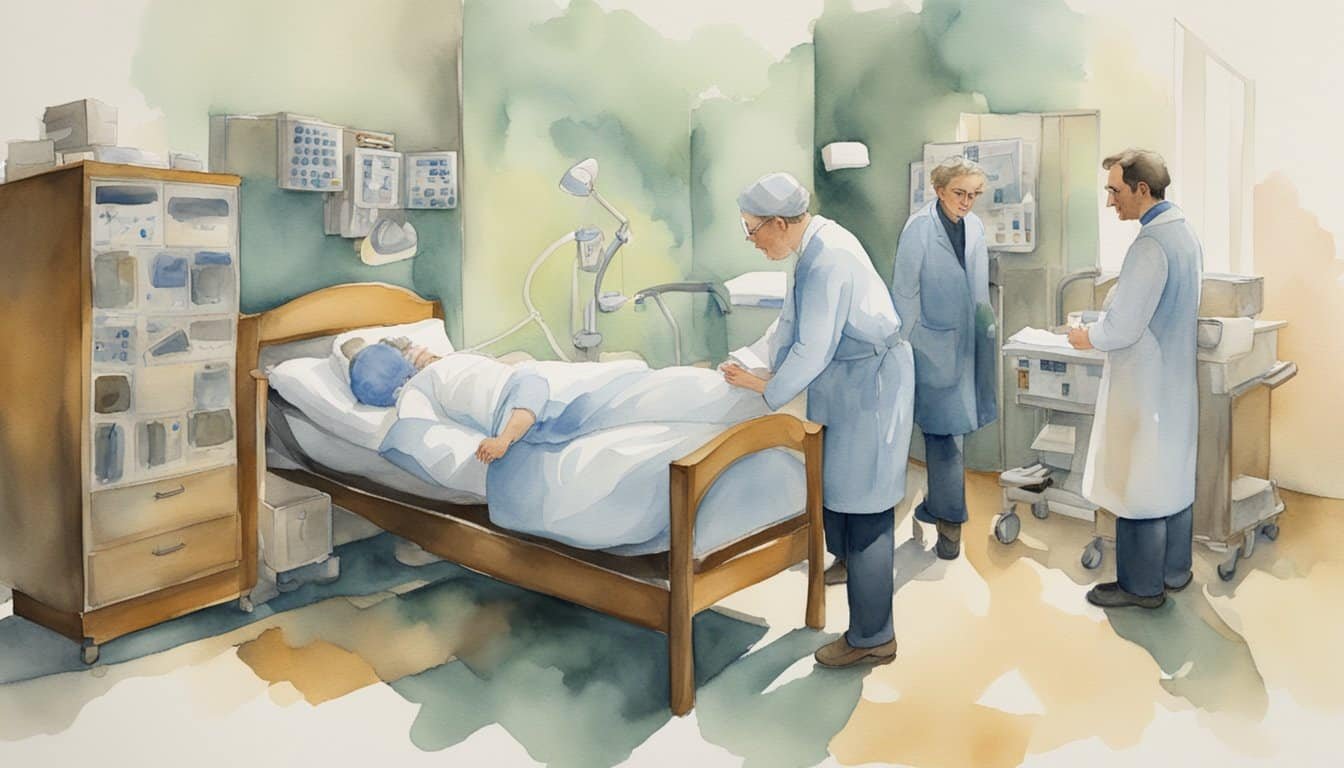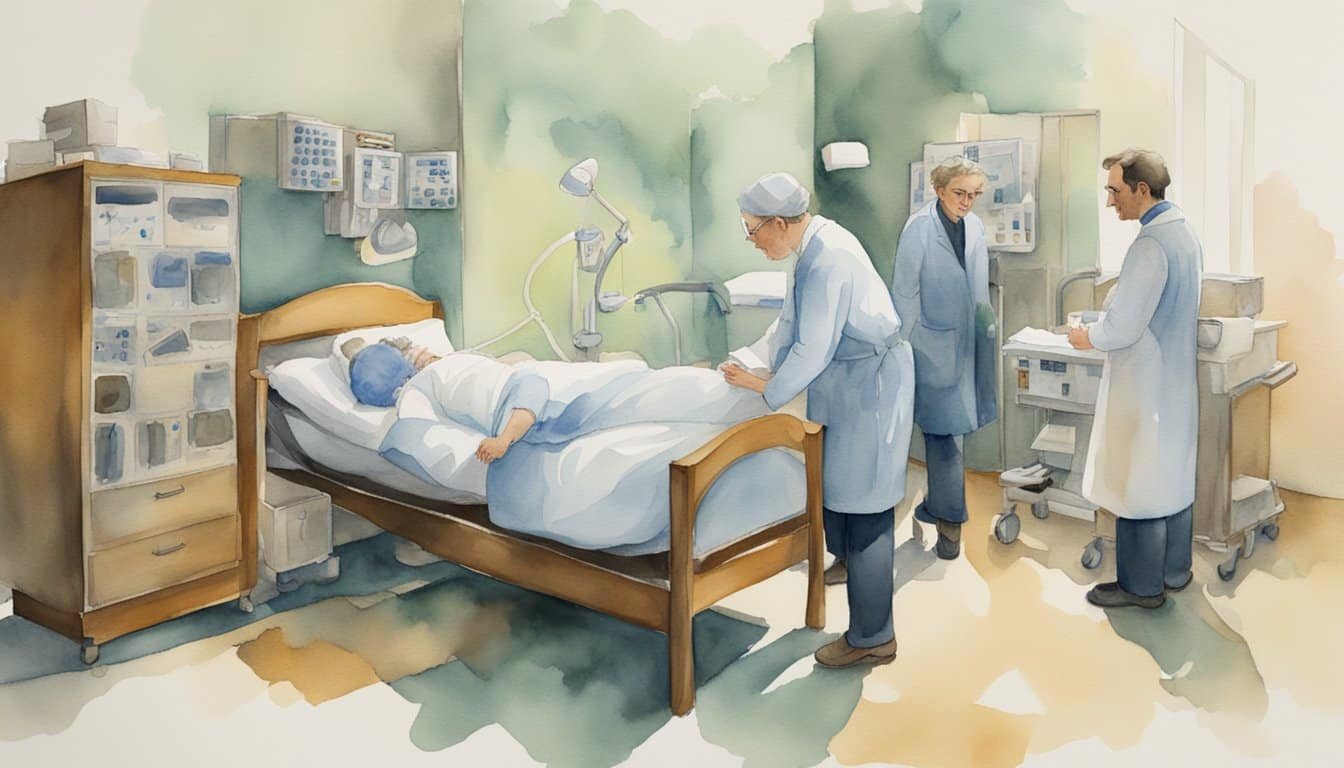Understanding REM Sleep Behavior Disorder (RBD)
Rapid Eye Movement (REM) Sleep Behavior Disorder tantalizes the medical community with its peculiar symptom—acting out dreams. It’s a compelling portal to understanding certain neurodegenerative diseases.
Defining RBD and Its Symptoms
REM Sleep Behavior Disorder is a sleep disorder characterized by the dramatization of dreams. Individuals with RBD lack the typical muscle paralysis that prevents them from physically acting out their dream scenarios. Typically, this results in behaviors such as kicking, flailing, and even jumping out of bed. Patients may experience dream enactment that can be distressing or even violent, posing risks to themselves or their sleeping partners.
Relationship Between RBD and Neurodegenerative Diseases
RBD has been linked to a higher risk of developing neurodegenerative diseases. Interestingly, alpha-synuclein, a protein implicated in these diseases, has been found in abundance in patients with RBD. Conditions such as Parkinson’s disease, multiple system atrophy, and Lewy body dementia are among the potential neurological disorders that can follow an RBD diagnosis. This relationship is particularly prevalent in men and older adults, often signaling a malfunction in parts of the brain-stem that control REM sleep paralysis.
The discovery that RBD may precede the onset of these neurodegenerative diseases by years is a significant finding. Researchers are exploring how the aggregation of alpha-synuclein proteins in the brain might influence these diseases and RBD. Observing RBD might offer a fascinating window into these disorders’ progression and provide an early warning system for patients and clinicians alike. For further reading about the dream enactment during REM sleep, you can visit Health Mandatory. To explore the link between motor symptoms and RBD, check out the Movement Disorders Journal. For more insights into the intersection of dream enactment and significant alpha-synucleinopathies, Science Direct offers interesting perspectives.
Diagnosis and Treatment of RBD

Rapid Eye Movement (REM) Sleep Behavior Disorder, or RBD, is a condition where a person acts out vivid, often intense dreams. Diagnosing and treating this disorder is crucial, as it may indicate a larger neurological issue and can affect one’s quality of life.
Diagnostic Procedures for RBD
For someone suspected of having RBD, the first step is usually a consultation with a sleep specialist or neurologist. These experts can conduct various tests to confirm RBD. The diagnostic process often includes overnight monitoring in a sleep lab, where brain activity is observed using brain scans and sleep studies.
There’s also the exciting research by the North American Prodromal Synucleinopathy (NAPS) Consortium, which is investigating biomarkers for diseases like RBD through clinical trials. This could include tests such as spinal tap or genetic screens to assess risk factors and signs of RBD’s progression to neurodegenerative diseases.
Managing and Treating RBD
As for treatment, medication is a common go-to, with options like clonazepam and melatonin showing promise in reducing symptoms. Alternatives like certain antidepressants have been used as well, but always under close medical supervision.
Besides medication, some changes in sleep environment and habits can prove helpful, and ongoing research in sleep medicine is continually uncovering new approaches. For instance, Mayo Clinic suggests making changes to one’s sleeping area to ensure safety and reduce the risk of injury during episodes.
Let’s remember, achieving a proper diagnosis and finding the right treatment plan can help manage RBD symptoms effectively and potentially slow down the progression to more serious neurodegenerative conditions.
Living With RBD and Beyond

Living with REM sleep behavior disorder (RBD) requires an understanding that it’s more than a parasomnia—it can be an early indicator of neurodegenerative diseases such as Parkinson’s and dementia. This section explores lifestyle management for those affected and what the future holds in terms of research and understanding this complex condition.
Lifestyle Considerations and Support
For individuals diagnosed with RBD, maintaining a high quality of life is pivotal. Regular physical activity is encouraged, as it may contribute positively to their overall well-being. Safeguarding the sleep environment is essential to prevent injuries associated with dream enactment behaviors. They often require making adjustments, like padding sharp corners or moving furniture, to create a safe space.
Support from sleep doctors is crucial—they can offer specific advice and prescribe medications that might suppress unwanted sleep behaviors. People with RBD and their families could also benefit from education about the disorder and support groups that provide a space to share experiences and coping strategies.
Future Research and Outlook
The connection between RBD and neurodegenerative conditions, like Parkinson’s disease, characterized by a loss of dopamine-producing brain cells, is a major focus for researchers. Synucleinopathies, a group of disorders including Parkinson’s, are marked by the abnormal accumulation of alpha-synuclein protein and are closely linked with RBD.
Emerging research through the NAPS consortium is honing in on biomarkers and genetic factors that could predict the progression from RBD to conditions like Parkinson’s or dementia. Recent interest has revolved around deep-brain stimulation as a potential treatment, not just for mobility but also for cognitive symptoms associated with neurodegenerative diseases. With ongoing studies, there’s hope for early diagnosis and better treatments, improving the prospects for those living with RBD.

